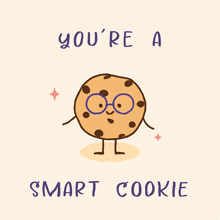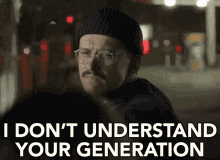Every December, I spend forever searching for the perfect New Year’s resolution. TikTok certainly has a lot of ideas--from learning a language to princess pilates.
Yet no matter what I pick, January blues and the cold weather always seem to wear me down. But I’ve got a good feeling about this year, and I think you should too. In 2025, I’m going to start to recognise my glimmer moments.
Here is everything you need to know about glimmers and why you shouldn’t underestimate this healing technique.

Photo by Arina Krasnikova from Pexels
What are they?
A glimmer is the opposite of a trigger. It's a tiny moment that makes you smile and evokes a sense of peace. Common examples include putting on a cosy jumper or playing with a pet.
The term was coined by a clinical social worker, Deb Dana, who specialises in complex trauma. In an interview, she explained why she chose the name ‘Glimmers’: “Glimmers feels like what it is, a tiny spark- of feeling safe enough, okay enough in the world.”
These minuscule moments have a physical effect on your brain as it activates the parasympathetic nervous system, which deepens your sense of relaxation. But if we don’t pay attention to them, glimmers and their benefits often pass by us.

Photo by Yaroslav Shuraev from Pexels
Retraining your brain
Whether you’re a bit of a perfectionist (guilty) or you’ve been through trauma in your life, a lot of us are wired to look out for triggers. It’s our brain's way of protecting ourselves, being always on alert for danger.
This pattern means our brain is constantly reminding us of our past trauma, keeping triggers at the forefront of our minds, making it impossible for us to move on.
How often do we even think about our ‘'positive triggers’'? It’s something rarely asked even in therapy. How can we expect to become mentally strong if we don’t prioritise the things that give us strength?
By making a conscious effort to notice things that make us happy, we can begin to heal from trauma.
Self-care
Glimmers also help us be kinder to ourselves: when we know our glimmers, we can weave them into our daily lives.
This practice is powerful when we’re going through a tough time and builds up a toolkit of ways we can help ease our mental strain. Lighting a scented candle, listening to a favourite song, or flicking through a magazine can all be glimmers.
Sometimes we need an excuse to get our favourite coffee or some new cosy socks. The idea of glimmers is that doing stuff like alike isn’t just okay, it’s important!

Photo by Taryn Elliott from Pexels
Sensory
Glimmers are usually things we don’t even have to think about. They are often tactile and sensory experiences like scents, music, a breeze, or some sunshine.
They are especially important during the winter when many of us suffer from Seasonal Affective Disorder (SAD). SAD is when colder weather and less sunshine lead to seasonal depression and a drop in mood. Noticing glimmers, especially those like the sun on your face, is a way to combat SAD.
For me, knowing about glimmers has helped me realise that I need to cut down my screen time because while these moments often come to you, it’s harder to get those sensory experiences if you’re constantly online.
TikTok also distorts our expectation of glimmers as we’re exposed to millions of snippets at the ease of an app. When we see something funny or entertaining we don’t dwell on it, we just scroll on. This is a reason why a lot of us take for granted Glimmers when they happen in our own lives.

Photo by AS Photography from Pexels
Personal to you
One thing I love about glimmers is that they are deeply personal to our own memories.
Every person feeling the warmth of sunshine will associate it with something different. Maybe it’s a sunny place or a memory from a summer concert.
For me, the smell of freshly cut grass always boosts my mood because I associate it with picnics and the excitement of the build-up to summer. For others, it’s just another aroma they experience throughout a busy day.
Everyone has their own way of acknowledging these moments.
For 2025, I’ve decided to write my favourites on slips of paper and put them into a ‘Glimmer Jar’ so I can read through them at the end of the year. You could also start a ritual sharing glimmers with friends, write in a glimmer diary on your notes app or just take a few more seconds to enjoy them. This is why they make such a simple New Year’s resolution.

Photo by Yan Krukau from Pexels
Underestimated
I’ll admit when I first read about glimmers I was skeptical. How was this any different from other mindfulness techniques I’d tried and failed, like gratitude journaling or ‘being in the moment’?
On her website, Deb Dana, who created the concept, explains why glimmers are special the best:
“They are not a way to always look on the bright side or count your blessings and discount your suffering, [but a] reminder that the nervous system is exquisitely able to hold both dysregulation and regulation. Your days can be filled with difficulty, and you can also feel a spark of safety, regulation, and connection. “
As I started writing this article, I wondered why we underestimate the things that bring us joy.
So much of mental health discourse is about negative thoughts and major problems, but sometimes the hardest thing is relearning how to enjoy everyday things.
New Year's resolutions are often about what we feel we should do instead of doing something that will make us happy.
Maybe if we had more conversations about our glimmers, the world would be a happier and more mentally strong place to be.

Photo by Hassan OUAJBIR from Pexels
You can read more about glimmers here: What is a Glimmer- Rhythm of Regulation
















